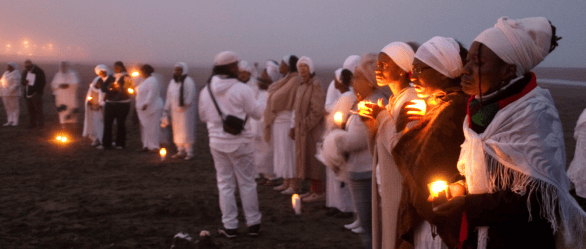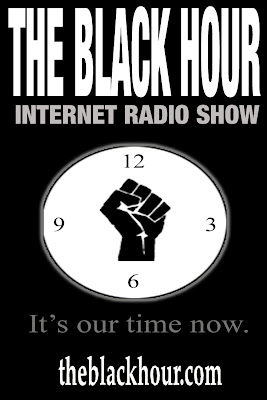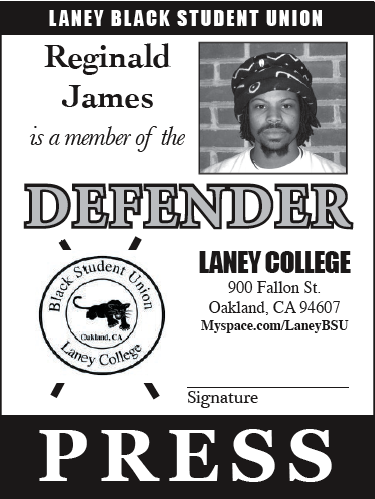Asians four times more likely to receive jobs on campus than African-Americans

Most community college students work. They have to. Work-study provides an opportunity for students to work on campus while attending classes.
There are 300 jobs on campus annually, including about 100 Federal Work-Study positions. According to data from the California Community Colleges Chancellor's Office, there are disparities among who gets FWS positions at Laney.
Of the 95 students at Laney who received FWS positions on campus 2006-2007, 73 were Asian. While African-Americans represent almost an equal portion of Laney's population compared to Asians, African-Americans received only 16 FWS allotments. Latinos, whites, and Pacific Islanders faired no better.
Depending on who you ask, some blame the college, while others put the responsibility on the students themselves.
Getting work-study
"There are two ways students can work on campus. Through federal work-study," money provided by the federal government, or "through department funds. Overall, 250-300 students are employed throughout the year on campus."
Robert Fleming
Student Employment Specialist |
"There are two ways students can work on campus," said Student Employment Specialist Robert Fleming. "Through federal work-study," money provided by the federal government, or "through department funds." There are allotments for students to work in the departments. "Overall, 250-300 students are employed throughout the year on campus."
"The FWS program provides funds that are earned through part-time employment to assist students in financing the costs of post-secondary education," according the U.S. Department of Education's website. Over 3,400 institutions participate.
In order to get a work-study position, a student must be 18 years of age. Students who cannot provide correct information cannot be hired, according to "How to Hire Hourly Student Workers: A Supervisor's Guide" for Laney College.
When school is in session, students may work a maximum of 20 hours per week. Hourly wages cannot be less than the federal minimum wage. The Free Application for Federal Student Aid (FAFSA) must be completed in order for students to receive FWS.
The Economic Opportunity Act of 1964, whose goal was "to mobilize the human and financial resources of the Nation to combat poverty in the United States" establish a new program for work-study. After the Higher Education Act of 1965 the program was transferred to the Department of Education.
The trend of Asian students getting a majority of FWS positions is not new at Laney. According to data from the state chancellor's office, the trend goes back as far as 1994. Allotments between 1992-1994 were evenly dispersed between Asian and African-American students, and other groups proportionately with the college's demographics.
"When students fill out the FAFSA, there is a question that asks if they are interested in working," explains Laney Financial Aid Coordinator Judith Cohen. "Students also have to meet a few criteria to be eligible. They have to meet the financial-need criteria, have their paperwork correctly completed and they must be enrolled."
"Financial need" is determined by congressional formula that evaluates the financial information reported on the FAFSA and determines the expected family contribution (EFC), according to the Department of Education.
Fleming said, "Students are given an amount they are expected to contribute, after their fee waiver is deducted and whatever other awards they receive. If they still have a remaining need, they are eligible for work study."
"We package them up on a first-come first-serve basis," said Cohen.
Winning the lottery
When Fleming started in 2000, work-study positions were distributed differently, and for his first two years, he "followed the old way," where students had one day in May in which they could pick up the applications.
"People would be waiting at 6 a.m. for an application," said Fleming. "It wasn't the best process. People who couldn't make it lost the opportunity."
Laney "used to have one day and they'd line up early in the morning," recalls Cohen. "It would be all Asian students. It wasn't fair.
Fleming now uses a lottery system to distribute work-study positions to students.
For most of the month of April, Fleming advertised the positions by putting up notices that students could get summer work-study applications, which had to be turned in by May 2. While he typically receives about 130 each year, this year he received 166 before the deadline.
"Sixty-six percent of the students who applied were Asian," said Fleming. "This is down in comparison to the past."
Fleming uses a random lottery to select 50 students from those who turned in the applications on time. He then checks to make sure those who have applied are enrolled for the fall semester. If not, they are bumped from the list and others are randomly chosen.
Fleming suggests this practice is fair.
"It's random selection," said Fleming. "But if you have a large population of one group of people over others, the odds are in their favor."
Occasionally students find work off campus or decide they have too many units to work, and the positions are filled randomly. This process of elimination is continued in this lottery format until all work-study slots are allotted.
Who gets work-study at Laney
"I don't know why they don't apply," said Fleming in response to why other ethnicities are not applying for work-study positions. He has made a few observations, however. When students are in the hallway waiting to get to the financial aid counter, "more Asians look at the information on the walls."
Getting financial aid is not an easy process said Laney President Dr. Frank Chong, who admits he had to "fill out FAFSA two or three times" in college.
"Obviously one can conclude that those students have figured out the system. They've learned to navigate the FAFSA and get through a myriad of requirements to get work-study."
Frank Chong
Laney College President |
"Obviously one can conclude that those students have figured out the system," said Chong. "They've learned to navigate the FAFSA and get through a myriad of requirements to get work-study." Chong admits that it is not an easy process however.
"I would suspect that African-American students, particularly those who are first generation college students, are not aware and there is no one helping them figure out the system," added Chong.
"I would attribute internal and external variables that would contribute to that type of inequity," said Laney Researching and Planning Officer Dr. Connie Portero, who emphasizes the need for "communication." She sees disparity is due to a lack of communication to students, and a weak communication network among the underrepresented student populations, and the lack of a centralized manner of disseminating information to students as the cause.
"Internally, there is no system to monitor equity," said Portero. While the college publishes a Student Equity Report, Portero said "It is not internal," it's for the state. "We should develop it as apart of institutional effectiveness," or the monitoring of how well Laney is serving students.
Interim Vice-President of Student Services Jim Bracy agrees.
"This has not been monitored for some reason or another," said Bracy. "Now we have a situation where Asian students have substantially more work-study opportunities than other ethnic groups on Laney's campus."
Networking, not working
"It may be a situation where Asian students network more effectively," said Bracy, while other students do not."
"Asian students have a fantastic network," asserts Cohen.
"When you find this level of imbalance a college has to take immediate steps to rectify this concern," said Bracy. "It is a concerned when you see's those numbers," said Bracy, who accepts "ultimate responsibility" since he is over all student services programs.
"It's the student's responsibility," said Laney student Greg Wright, an African-American who has a work-study position in the athletics department. "But most of us don't have anyone to follow. There's no leader, no word of mouth."
Lamille Perry, a student ambassador and former ASLC Senator sees it as a lack of awareness. Perry, an African-American, thinks that most African-American students "don't know about it, or when they find out, it's too late," to sign-up he said. Perry found out about workstudy from a friend. He "filled out the paperwork and on parts I needed help with, Mr. Fleming helped me."
"Lamille told me about the student ambassador position," said Crystal Barnett, who thinks African American students don't apply for work study due to a lack of awareness. "I don't think they know about work study," said Barnett. "Sometimes they don't read the financial aid application."
But Portero doesn't think students are the ones to blame, but rather the perceptions and attitudes towards some groups of students.
"There is a negative perception towards African-American students that is not based on reality," said Portero. "We can't assume it is true until we create a different paradigm and test it. "It is often the same people creating injustice who are creating the myth to justify it," said Portero.
"It comes down to who is pursuing it and following instructions," said Cohen.
While there is a disparity, it may not be intentional. Chong doesn't think that financial aid is doing "anything wrong."
"You're doing a good job with Asian students," said Chong. "But what about the others?" he asked.
Fleming insists the system is fair, but encourages more students to apply earlier.
"My goal was to make it as fair and honest a way as possible," said Fleming. "And that's why I went with the lottery."
Why work-study?
"The purpose of work-study is to provide work learn opportunities to students as a way to supplement and meet" students financial needs, said Bracy.
Work-study helps students because it "works around students schedules," said Fleming. "For example, if they have classes in the morning, we can get them work in the afternoon."
According to Chong, work-study is an opportunity for students to learn while they earn money, while adding value to the campus through their service. While at UC Berkeley he had a work-study position and understands its' value, he said.
"Studies show that having students work on campus increases retention," said Chong. "Students learn about services they otherwise wouldn't have known about."
Portero said the disparity might also be contributing to the lack of retention amongst non-Asian students of color at Laney, particularly among African-American and Latino males.
"Work study is a financial tool here to assist our students in realizing their goals," said Portero. "Education is so expensive, even Community College is out of the reach of our students."
"For some students, by having work study on campus, it's their only way of saying to us, 'Look, we need financial assistance to make it through,'" said Portero. "If a student's on financial aid, we get first hand experience with getting to know them and their issues.
"If we can place them with their major, they get more experience within their educational goal," said Fleming.
Other employment opportunities for students
Besides work-study, there are other employment opportunities on campus. Students can get hired working for departments. Fleming wants to get departments to send him information about job opportunities within those departments. Each year, departments get an allotment of funds for assistants. These are not funded through FWS but by the college.
There are 384 students employed on campus. Forty-nine percent are non-Asian, according to Fleming.
"If you look overall, it levels out," suggests Cohen in regards to other employment opportunities on campus.
Students can also go to the Student Employment Center on the third floor of the Student Center for information about job opportunitites.
Fleming is considering new ways to get the word out to students.
"I put notices in the Welcome Center, EOPS, the Tower lobby," said Fleming. "I want to get more peole to apply." Although positions are "limited, we want to get the most people to apply as possible."
"I thought about advertising in the Tower," added Fleming.
Improving work-study
There is a plan in the works to revamp the Laney work-study program. The "notion of an Eagle Corps," according to Chong.
"We want to strengthen the work-study program," said Chong. "For work study may be students first opportunity to have a job, get training and opportunities."
"It's all about people power and taking 100 students and organizing them in a way that they will add value to the college and student success," added Chong.
Portero hopes that work-study opportunities will extend into the community, with the result being more training opportunities for students. "We should also have work-study opportunities in community based organizations," said Portero.
When Chong came to Laney in 2006, he commissioned an audit of the financial aid office that was conducted by the National Association of Student Financial Aid Administrators (NASFAA) in November 2006.
Among the strengths identified by the peer review team was Fleming.
"The FWS specialist should be commended for his organizational skills and coordination of the FWS Program. He effectively monitors each student's FWS wages and works well with students," according to the Standards of Excellence Report.
The NASFAA report also criticized the program for only allowing students who receive the Pell Grant to get FWS positions.
Achieving equity with diversity
"I want to consult with our African-American faculty, student, and classified leadership to get their input to make the situation better," said Chong. "I wouldn't want to assume I know the answers when I didn't even know the problem."
"Clearly Laney needs to do a better job in reaching out to African-American students," said Chong. "If it requires special workshops, targeted workshops to all students."
Due to Proposition 209 that was passed by voters in 1996 prohibiting public institutions from considering race, gender, or ethnicity, Laney is unable to save spots for specific groups of people; however, education is an option.
"Legally, you can't save spots for certain ethnic groups, you have to set criteria," said Chong. "You can't do quotas but you can do education.
"Maybe we can hire African American workstudy students to train them to help other students at least get started," suggests Chong.
Bracy suggests that the information can be shared during outreach to local high schools or during the new student orientation opposed to quotas.
"Bottom line is, it is not about quotas," said Bracy. "It has to do with how information is disseminated. It's about educating our student's about the opportunities."
"Laney should have a program based on African Americans, but for everyone. Like a Puente," said Wright."
"We used to call it affirmative action," said Bracy. "But there are affirmative 'steps' you can take to make sure more students are included."
Perry said "Everyone should get the opportunity."
For students interested in work-study positions, contact Robert Fleming at rfleming@peralta.edu or visit him on the second floor of the Tower Administration Building.
_____________________________________________
Back to Laney Defender's Spring 2008 issue.
Read more...


































 The late Stephen Jay Gould quotes Darwin’s Voyage of the Beagle, “If the misery of our poor be caused not by nature, but by our institutions, great is our sin.”
The late Stephen Jay Gould quotes Darwin’s Voyage of the Beagle, “If the misery of our poor be caused not by nature, but by our institutions, great is our sin.”

 Black History Month has come far from its humble beginnings to become a time of cultural celebration, education and community service (as well as a magnet for token-corporate sponsorship opportunities).
Black History Month has come far from its humble beginnings to become a time of cultural celebration, education and community service (as well as a magnet for token-corporate sponsorship opportunities). Malcolm X said, “Of all our studies, history is best qualified to reward our research.”
Malcolm X said, “Of all our studies, history is best qualified to reward our research.”





 Laney BSU rallies to save Ethnic Studies at Laney College.
Laney BSU rallies to save Ethnic Studies at Laney College.